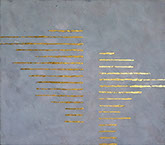
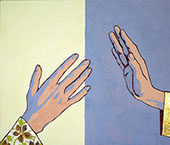
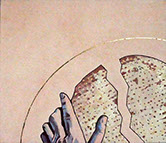
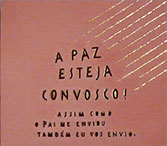
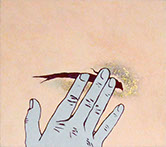
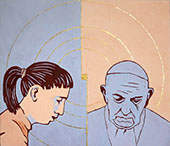
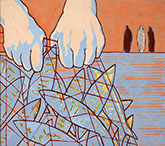
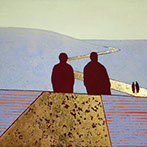
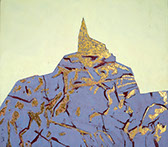
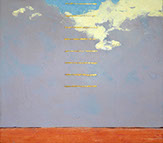

on Via Lucis
The Pascal mystery is described in the Gospels by a series of events, each with deep spiritual meaning. Most emphasis has been on the ones that lead up to the suffering and death of Christ, from the decision of Pontius Pilate until the crucifixion. To visualize this and make it understandable for people, the fourteen stations of the Via Crucis were once created and developed.
The mystery is, however, a twofold one, the first part consisting of these above described events, but the equally important second part - the Resurrection of Christ and the following happenings leading to the Ascension and Pentecost – hasn´t traditionally been visualized in the same pedagogical way, and this has gradually been seen as unsatisfactory. Too much emphasis on the suffering, and not enough on the hope and victory of life over death. The sentence that summarizes the whole: per crucem ad lucem - through the Cross to the light has been visualized only in part.
Thus, on Good Friday in 1991 the Pope Paul II introduced Via Lucis - fourteen stations at which the events from the Resurrection to the Ascension and Pentecost could be meditated on and prayed by. Exactly which of these that should be chosen for the stations hasn´t been universally agreed upon, and no church authorities have tried to impose such a list – so there are many variations (as has, through the ages, also been the case with Via Crucis).
For the Capela Imaculada in Braga eleven paintings were made – which were as many as the space allowed for. The interpretation of each painting, however, also allows for some complexity, and thus more stations could be said to be covered. Also included is the Sacrament of Reconciliation, so essential that it had to be there. It is put in the center of the series of paintings.
The stations are:
1. Christ has resurrected, and in the empty grave there are two angels, meeting the disciples.
2. Noli me tangere. The mourning Mary Magdalene meets Jesus outside the empty grave, but doesn´t recognize him until he says her name. She exclaims: Rabbuni!, and wants to touch him. He, however, says: Touch me not, for I am not yet ascended to my father.
3. Jesus appears to his disciples, who don´t recognize him for the one he is, until he breaks the bread.
4. Jesus appears again to his disciples, and greets them by saying: Peace be with you. As the Father has sent Me, so also I am sending you.
5. Jesus strengthens the faith of the doubting disciple Thomas by letting him touch his wounds.
6. The Sacrament of Reconciliation.
7. The fishing at Tiberias lake. The fishermen are having no luck in their work, and the catchon is poor. Jesus appears and tells them to throw out their nets on the other side of the boat. They do as told, get a multitude of fish, and recognize him.
8. The disciples are being sent out into the world. Mathew 4:19: And He says to them: Come after Me and I will make you fishermen of people.
9. In Mathew 16:18 Jesus says: And I tell you that you are Peter, and on this rock I will build my church.
10. The Ascension of Christ.
11. Pentecost. All languages appear as one in the light of the Holy Spirit, and all the people of different nations suddenly understand each other.
Via Crucis calls for a dramatic form-language - strong contrasts, graphic forms, clear message, dark colours, images stripped down to the essential.
Via Lucis calls for more abstraction. Christ himself is now gone – he shows himself, but only in an ephemeral, almost transparent way. He is gradually leaving his worldly form to join the spiritual realm, and leaving to his disciples the work of spreading the light. The journey is about how he is helping them tackle their fear, confusion and helplessness, preparing them for their great work. The colours have to be lighter, softer, the form more conceptual. Also, gold has been used to underline the importance and value of all these events.
The paintings are made in tempera on linden-wood panels, the oldest painting technique there is, and the one traditionally used for icon painting – but also a technique valued and used in contemporary painting because of its superior ability of keeping the colours luminous and radiant in the different lights of the day and over many years.
Lisa Sigfridsson
artist